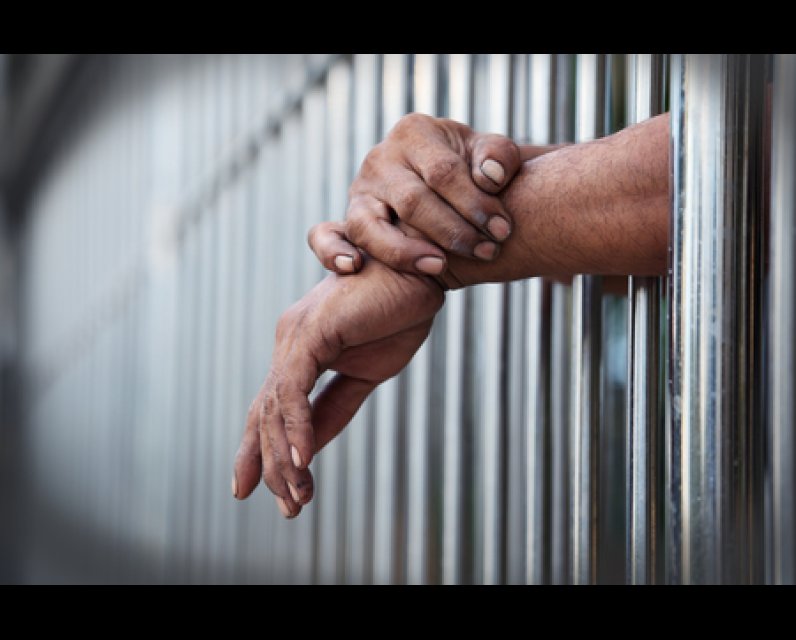Unpublished Opinions
"I Did My Time ..." Punishment and Restorative Justice in Policing and Society

Valarie Findlay is a research fellow for the Police Foundation (US), and an associate member of the International Assocation of Chiefs of Police, and has two decades of senior expertise in cyber-security for policing, military and government departments. She holds a Masters in Terrorism Studies and published her dissertation on the impact of terrorism on the transformation of law enforcement in Western Nations. Currently, she is preparing her doctoral thesis on terrorism as a social phenomenon. She can be contacted at: vfindlay@humanled.com - http://www.humanled.com
Aside from the flawed application of the criminal justice model, research has overwhelmingly suggested that the effectiveness of punitive measures have been slim at best. Whether it is the threat of punishment or its degree of severity, neither have shown to modify behaviour in the short or long term. Overall, the certainty of punishment - higher prosecution rates as opposed to severe sentences[1] - has shown to be a better mechanism for deterring anti-social and criminal behaviours, but still falling below societal expectations.
Many decades ago, when we abandoned corporal brutality in favour of the more humane forms of programmatic punishment of the carceral system, this was seen as a civilizing step for society. But prisons are just buildings and their internal programs determine whether they have a rehabilitative or punishment function, or both. Up until the mid-1970s, rehabilitation was very much a key part of many prison programs with occupational skills and psychological and addictions support in place to encourage successful societal reintegration.
Since then, the broadening of crime and cost cutting measures made the punitive justice a favoured approach over reformative or rehabilitative programs. Now, the argument to return to a more restorative approach is re-emerging due to explosive growth of the prison population growth and punitive approaches having a minimal effect on crime rates. For awhile at least, it seemed as long as the punishment appeared to match the culpability of the offender and harm inflicted on the victim and society - in other words, the punishment fits the crime - the approach was justifiable and tolerated.
Regardless of the benefits of restorative justice, it may prove to be a challenge to reinstitute it as a long term solution. The desire for punitive measures or punishment is psychologically strong and deeply ingrained in the public and media, even in the face of its shortcomings and that loss, harm and suffering are poor yardsticks for doling out punishment. It seems punishment is an intricate part of our social survival responses.
Nietzsche had said punishment was “over-determined by utilities of every sort” and that the desire to punish is deeply rooted in human nature. It starts with reciprocity. Among many social structures, reciprocity is the basis of all relationships and social groups and when behaviours emerge in an individual in that group that threatens or damages it, punishment ensues. Studied extensively in primate populations where chimpanzees experience retaliatory outrage towards peers for indiscretions, it is a direct means to 'even the score' - not in the sense of revenge but to right and re-establish social equity.
It is the human sense of unsatisfied reciprocity that fuels our drive for justice and punishment and as a response to inequity and means to avert it. If we apply this concept to bullying, the most unsophisticated crime in social order, this resonates strongly: bullying is founded on responding to compounded inequities by external sources and is reinforced by shame, guilt and fear. The interesting misconception about shame, guilt and fear is that they are always expressed as submissive responses, but more and more they are expressed as aggression and transferred into violence. For some, the overwhelming shame to the inequity brings forth anger, violence and retaliation that is directed towards those, and often innocent others, who have wronged them.
When punitive approaches, as opposed to reformative, are exacted against offenders in these scenarios, it is believed that this interferes with the normal human responses of regret and restitution, halting the reparative progress to an improved life adjustment (its important to note that this is valid in marginal to indictable crimes and within the accepted behavioural norms of society but in egregious, psychopathic behaviours due to the failure to take responsibility for their actions[2]).
Irrespective of where these insufficient coping or response behaviours emerge from (although believed to be childhood experiences of abuse and dysfunctional family structure), it creates a cycle - the bullying behaviour evokes particular responses from the social order, often ostracization and punishment, which further isolates the offender and entrenches the aversion to inequity, spurring an escalation bullying behaviours.
These sociological and psychological dynamics set a foundation to understand 'restorative justice'. The term, for me, was a bit ambiguous and it didn't convey its functional and beneficial factors. Really, its best descriptors hinge on it being reintegrative for the offender, harm-focused towards a person - as opposed to an offence towards a 'state' or crown - and its promotion of engagement and accountability with the offender, as well as their victims. Most importantly, it recognizes that the term 'victim' extends beyond the target individual to that person's social circle - family, friends, colleagues, etc.
This month, I had the pleasure of attending a workshop by Terry O'Connell, director of Real Justice Australia, a division of the International Institute for Restorative Practices (IIRP) and leader in restorative justice - Terry's passion for and intense knowledge of restorative justice comes from his practical experience as a 30-year veteran of an Australian police service and in developing the restorative justice policing model. Terry describes restorative justice best as "... view(ing) crime as harm done to people and communities" and having " a strong emphasis on offenders being held accountable and accepting responsibility [to those who have been harmed]"[3], which is in direct contrast with retributive justice, where the aim is to establish blame, guilt and administer punishment or sufferance.
Restorative justice is better understood when "contrasted with our present criminal justice system where crime is seen as an offence against the state, and is largely about punishments and sanctions." This is where the importance of involving those who are directly affected is crucial, thereby identifying obligations, meet inherent psychological and sociologic needs and to promote healing for both parties.
Involvement is facilitated through 'conferencing', which is not mediation but a forum for discussing the harm and its effect between the victims and the offender, moving the offender to an empathetic response through acceptance, understanding and restitution or reintegrative behaviours. While this program model can be integrated into schools, prisons, courts and crown attorneys and community and social justice support groups, law enforcement is in the most unique position to enact restorative justice.
Modern policing is based on maintaining the status quo in an authoritarian, coercive manner - to hold and restore order based on the laws not social values. But in reality, police are actually tasked with something more integral to our societies: to influence and foster social change. But law enforcement legislation and policies are completely void of any reference to it.
Police, through their interactions with the most vulnerable and troubled in our societies, are direct influencers of their societal behaviours and have a level of access very few practitioners do. This is not to suggest that police should be playing the role of social workers or psychologists, but the inclusion of restorative justice principles in policing programs would maximize this function that is already in use - turning it from either an informal neutral, negative or positive interaction into a formalized, professionalized program effort to reduce crime.
Where reformative justice is different from community policing, it can benefit from its ground work of developed relationships and channels of communication to deliver influence and affect of societal behaviours on offenders after criminal incidents. Its a hard pill to swallow though; we have idealized reconciliation, or reformation, as too light or soft of an approach and that the longer term investment and goal of producing a healthy, productive reformed individual is less desirable than making offenders "pay their debt to society".
When qualified cases are selected - screened on criminal severity, offender admission and public safety requirements - many positive societal outcomes from restorative justice can be realized, such as reduction of court case loads and repeat offences, especially with youth. In particular, police organizations benefit from the opportunity to gather knowledge and insight on communities and allows community representatives input on disposition of matters, a more open, accountable and satisfying experience for police, offenders and victims and a reduced optic of discriminatory practices.
For restorative justice to be successfully implemented and operationalized, there must be public confidence in law enforcement and the justice system and clear expectations and success criteria must be identified beforehand. As well, developing and maintaining a sense of connectedness within communities for all stakeholders - law enforcement, justice system, courts, the public and offenders - becomes crucial and establishing balance, restoring pride and maintaining cohesion become driving factors. In the very least, restorative justice principles and models should be included as a valuable method to guide and inform future criminal justice and law enforcement policy. In a time where public safety resources are being taxed, the complexity of crime is growing and we are exhausted by the media's sensationalization crime, our societal health relies on instituting policies that focus on crime reduction, rather than being formed around our primordial reactions.
[1] Valerie Wright, Phd, The Sentencing Project, http://www.sentencingproject.org/wp-content/uploads/2016/01/Deterrence-i...
[2] Dr. Robert D. Hare, Without Conscience: The Disturbing World of the Psychopaths Among Us, 1999 ww.Hare.org
[3] Terry O'Connell, Restorative Justice in Policing, http://restorativejustice.org/10fulltext/oconnell



Comments
Be the first to comment